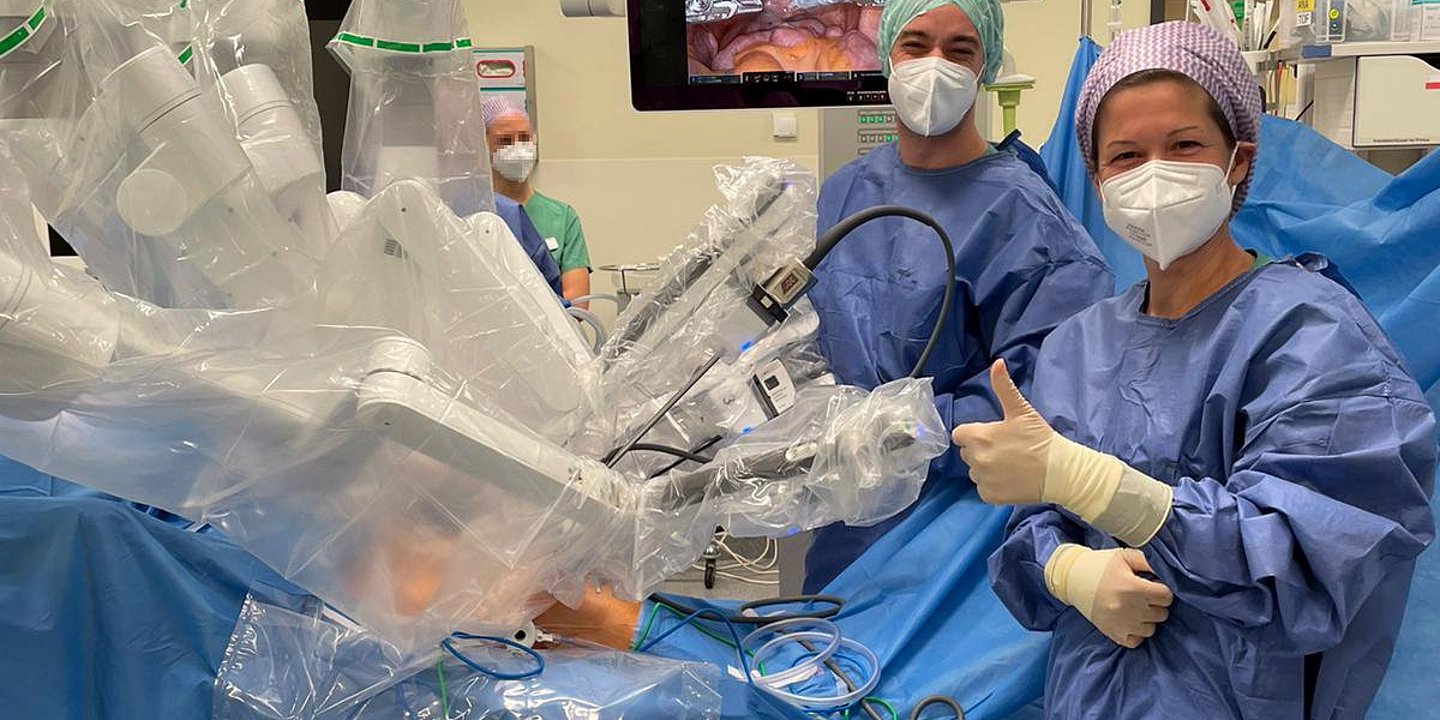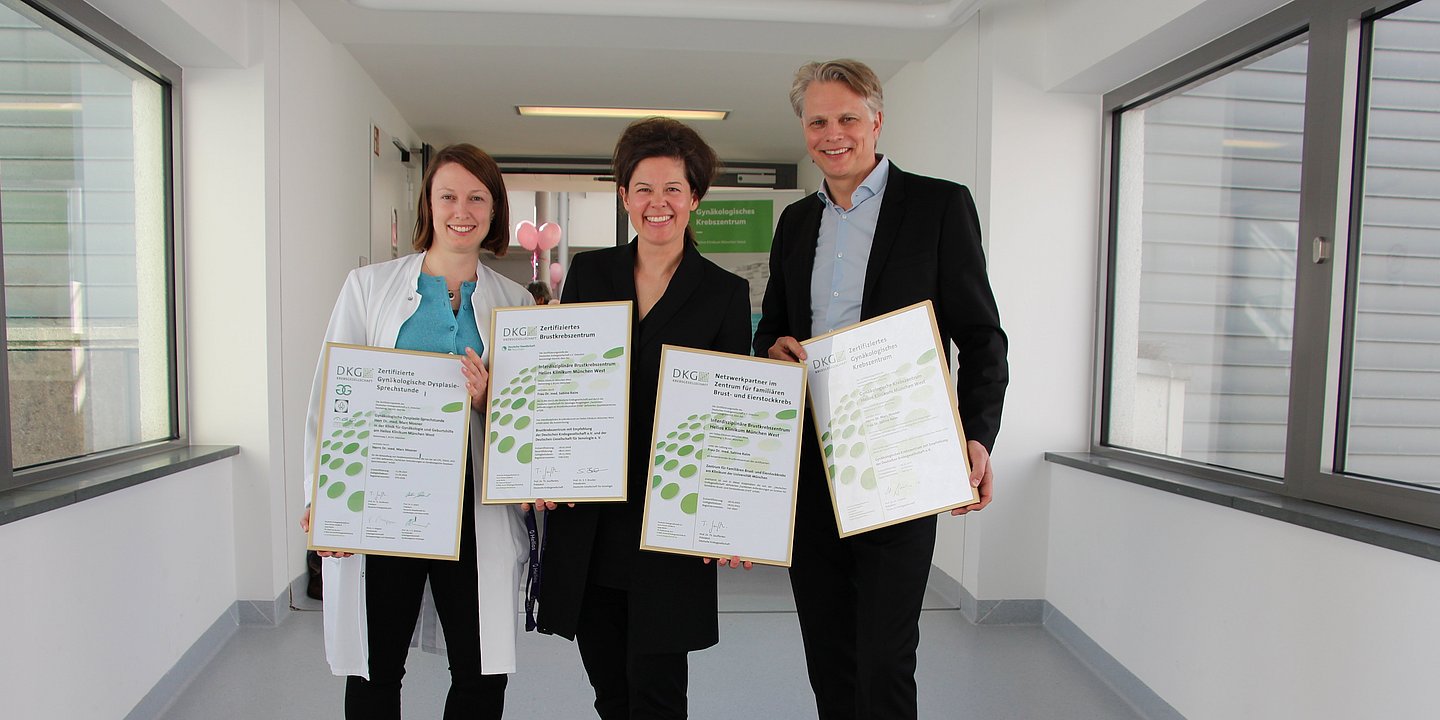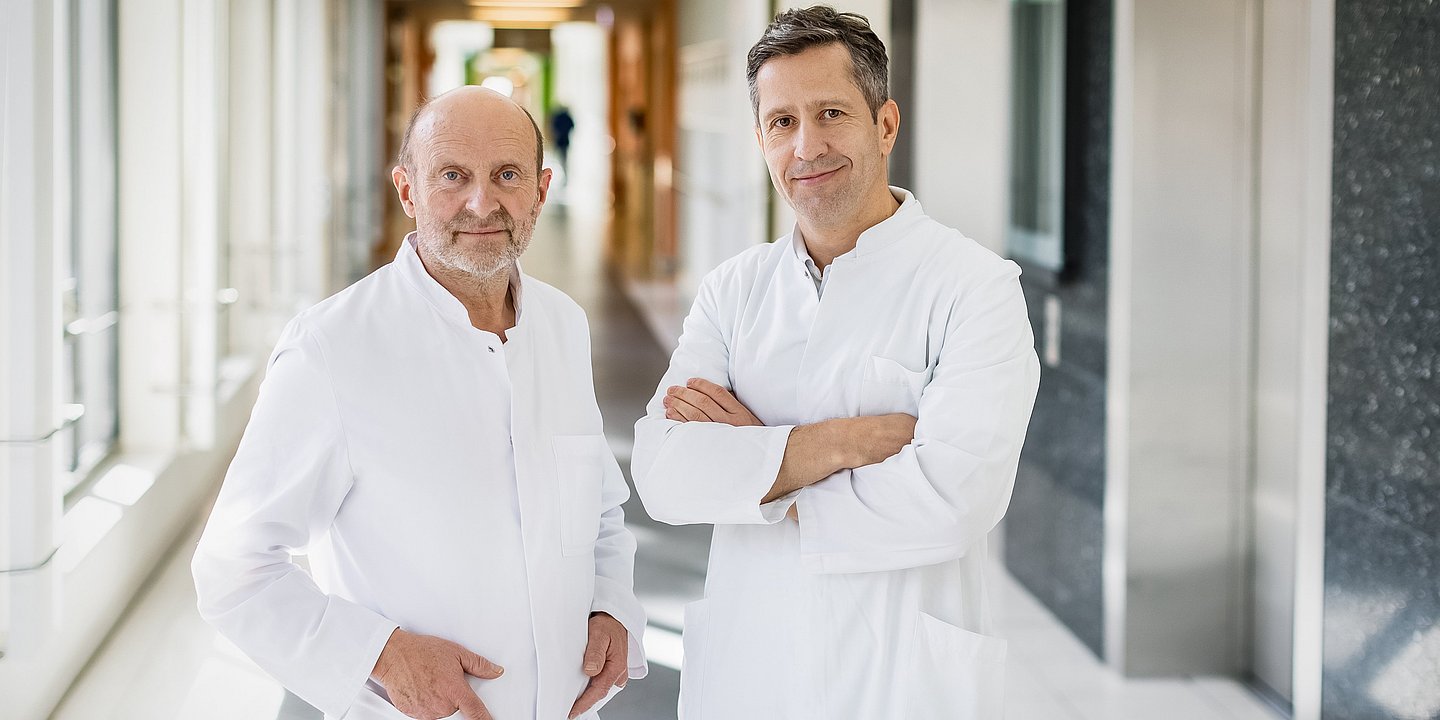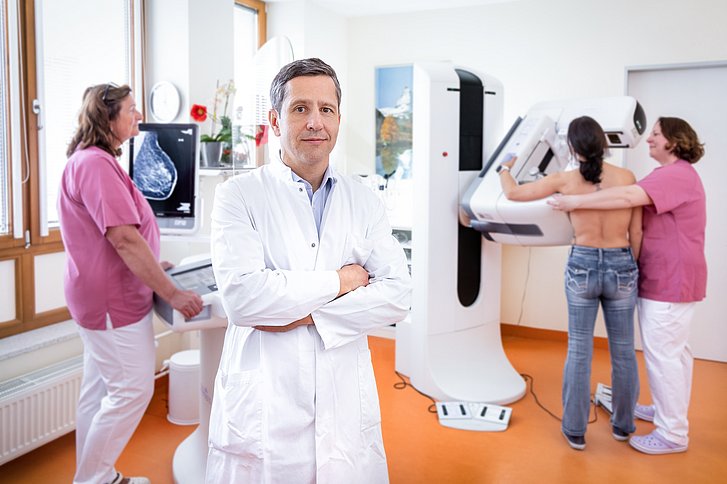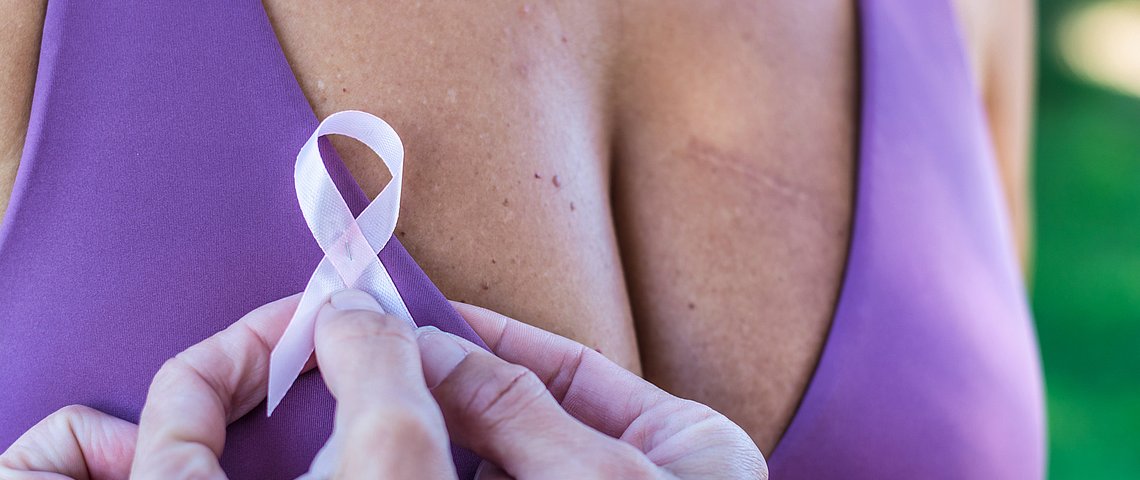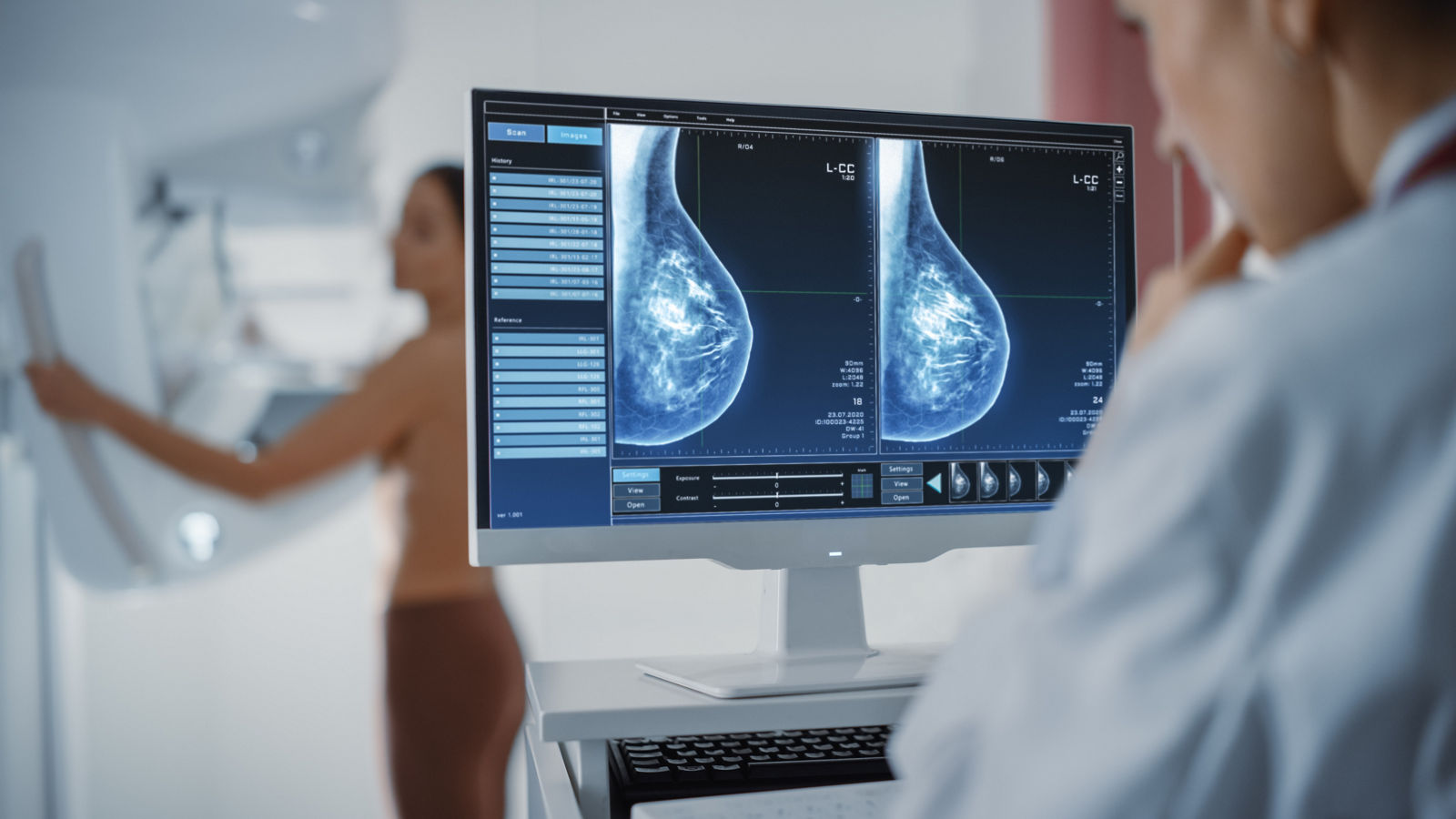
Palpable breast abnormalities: types, causes, diagnosis and treatment
When women notice a breast lump, it evokes a serious concern at first. Nevertheless, causes of breast changes or lumps are numerous. In a very rare case, this is a cancer.
Anette Hoge, Breast Care Nurse at the Helios Clinic Gifhorn, and Dr. Thomas Dewitz, Chief Physician of the Obstetrics and Gynaecology Department and Head of the Breast Centre at the Helios Clinic Gifhorn, will tell us what we need to know about breast lumps.
What are breast lumps and what different forms do they have?
The breasts lie over the pectoralis major muscle in men and women. It consists of glands producing breast milk in women and directing it to the nipples. The gland system is comprised of glandular lobules and is immersed into adipose and connective tissues.
Experts call a tumour any new change or thickening of the breast tissue that makes one breast different from another. Non-specialists commonly refer to them as lumps. The lump can be round or angular, hard or soft to the touch. It can be movable or fixed.
Lumps of various types can be formed in the breast. First of all, the good news is that 'When a woman notices a lump-type change, it is often benign. In most cases, they are harmless cysts or fibroadenomas,' explains Dr. Thomas Dewitz. He adds: 'Breasts can change during a menstrual cycle. In particular, tension or even pain may occur in the second half of the cycle and it often stops or lowers as soon as menstruation begins.'
"When a woman notices a lump-type change, it is often benign. In most cases, they are harmless cysts or fibroadenomas."
Dr. Thomas Dewitz, Chief Physician of the Obstetrics and Gynaecology Clinic and Head of the Breast Centre | Helios Clinic Gifhorn
Benign breast lumps: fibroadenomas
A fibroadenoma is a benign breast tumour. It consists of glandular tissue (adenoma) and connective tissue (fibroma). The fibroadenomas are one of the most frequent breast changes in young women. However, they may develop at any age.
Its size varies from a few millimetres to several centimetres. The lump is usually round to the touch, with smooth contours, and it can be compared to a small ball. It can often be moved and rarely causes complaints.
Anette Hoge, Breast Care Nurse, explains: 'Most lumps are noticed by women when self-palpated. When examining your breast, changes can be detected at an early stage.'
The hormones contribute to the development of fibroadenomas, but the exact cause of their development is unclear.
"Most lumps are noticed by women when self-palpating the breast. When examining your breast, changes can be detected at an early stage."
Anette Hoge, Breast Care Nurse | Helios Clinic Gifhorn
A benign breast lump: mastopathy
Mastopathy is a benign hormone-dependent breast change that occurs in 50–60% of all women and has a varying degree of severity. The breast can swell and the lumps such as cysts can form in it causing pain.
The symptoms usually occur in the second half of the menstrual cycle and improve after menstruation begins.
The reason for this lies in the cyclic changes in individual hormones. The effect of this is especially noticeable in the period shortly before the end of the menstrual cycle, which is menopause.
Mastopathy can be manifested in the following forms:
• Fibrous mastopathy. With this form, the inner layer of the tissue of the mammary ducts (epithelium) is increasingly replaced by connective tissue.
• Fibrocystic mastopathy. It leads to an increase in the volume of connective tissue and dilation of mammary ducts.
• Fibroadenomatoid mastopathy. This form is characterized by the accumulation of glandular tissue cells, as well as blood, secretion or pus in the mammary ducts.
Three grades of mastopathy severity are distinguished:
• Grade I: fibrous and fibrocystic mastopathy without proliferation of epithelial cells and atypically altered cells
• Grade II: with proliferation of epithelial cells, but without atypical cells
• Grade III: atypical proliferation of epithelial cells. This grade increases the risk of breast cancer. Although, it is rather rare.
'To rule out malignant breast neoplasms, gynaecologist should examine every change in the breast,' advises Dr. Thomas Dewitz.
A benign breast lump: cysts
Cysts are one of the most common types of benign breast lumps. They are often developed in women aged 40 and older.
The cysts are the fluid-filled cavities that are clearly separated from the surrounding tissues. They may consist of one or several chambers, usually remain small, but they may grow up to several centimetres. They remain unnoticed in many cases. As soon as the cysts begin to cause pain or are detected on the breast palpation, they must be examined to rule out a malignant mass.
When the mastopathy is diagnosed, it is often caused by cysts. Their size can vary depending on the menstrual cycle, but they may also remain unchanged.
Female mammary glands produce fluid not only during and after pregnancy. It may happen that the excretory ducts are blocked, which prevents the excretion of fluid. The fluid accumulates in the so-called glandular lobules. This contributes to the slow growth of the cyst and its enlargement.
'Some women are predisposed to cyst formation. If this is a case, they can be found not only in the breasts, but also in the liver, kidneys, pancreas and thyroid gland, while not having much importance for the disease,' explains Dr. Dewitz.
The cysts can also be formed after tissue damage. However, in this case triggers are not bruises or injuries but chronic inflammation. The inflammation sites may damage the milk ducts and small vessels, which prevents the flawless drainage of tissue fluid.
"Some women are predisposed to cyst formation. If this is a case, they can be found not only in the breasts, but also in the liver, kidneys, pancreas and thyroid gland, while not having much importance for the disease."
Dr. Thomas Dewitz, Chief Physician of the Obstetrics and Gynaecology Clinic and Head of the Breast Centre | Helios Clinic Gifhorn
Malignant breast lumps: breast cancer
Most malignant breast changes grow from the lining of the milk ducts (epithelium). 'The cancer is usually developed at one site and then spread to surrounding tissues,' explains Dr. Dewitz, Chief Physician. 'The invasive breast cancer is life threatening and there are many different forms of it. A non-specific type is the most common form.'
In addition, there is a type of breast cancer that only affects the breast milk ducts: ductal carcinoma in situ. The good news is that this type of breast cancer is always curable. However, patients often undergo more serious surgeries than for invasive breast cancer.
The most insidious type of breast cancer is the lobular carcinoma. It is formed in the breast lobules and invades the surrounding tissues (invasive type). Lobular carcinoma is hard to detect and it may have several primary sources. The glandular lobules may join together, which can lead to the development of a large tumour within the short time. Dr. Dewitz explains, 'Women with lobular carcinoma are often shocked that a tumour develops within a few weeks. They think that the tumour is growing too quickly, but it is growing very slowly like most types of breast cancer, although it cannot be detected on palpation.'
Risk factors for the breast cancer developing:
• Hormone replacement therapy;
• Smoking;
• Alcohol consumption;
• Overweight;
• Diabetes mellitus;
• Radiation treatment of the chest during childhood (for example, in lymphoma);
• Genetic predisposition (only in 10% of all cases of breast cancer).
The lumps in a man's breast: is it possible?
In Germany, the incidence of male breast cancer is one per every 100 cases of female breast cancer: 500 to 700 men are diagnosed breast cancer each year. Anette Hoge, Breast Care Nurse, 'Men usually have to force themselves to visit the Breast Centre, because women are predominantly treated there. However, in case of breast abnormalities, it is very important to consult directly with a specialist.'
Treatment of male breast cancer is not significantly different from the treatment of female breast cancer.
Breast lump diagnosis
Most of the breast changes are detected by patients themselves. Women aged 50 and older can have a free mammogram test on a regular basis. This can help to detect breast cancer early and increase the chances of cure.
If a lump is palpated in the breast or found on mammography or ultrasound, a biopsy is taken. In this case, several tissue samples are taken from the lump using a hollow needle. The procedure is ultrasound or radiologically controlled. It is performed in the outpatient setting under local anaesthesia and lasts for about half an hour. The obtained tissue is then stained by a pathologist and examined for cancer cells under a microscope. The result will be available in 2–3 days.
"Men and women can detect lumps on regular palpation of their breasts."
Dr. Thomas Dewitz, Chief Physician of the Obstetrics and Gynaecology Clinic and Head of the Breast Centre | Helios Clinic Gifhorn
Breast palpation: initial self-diagnosis
'Men and women can detect lumps on regular palpation of their breasts. However, mammography and breast ultrasound are more reliable in terms of the result. The sooner a tumour is detected, the more chances of recovery,' explains Dr. Thomas Dewitz. Most medical health insurance providers will only cover mammography costs for patients aged 50 and older.
The nurses of the Breast Department at the Helios Clinic Gifhorn offer free training in palpation techniques for women and men. Anyone who is interested can learn how to properly palpate the breasts to quickly recognize the changes. 'There are basically no differences in self-diagnostics in women and men. It is important to palpate the breast regions along the adjacent "paths" as if "mowing a lawn". It is also necessary to examine the armpits,' advises Anette Hoge.
When a doctor should be seen
Women and men who noticed changes in their breasts should visit a specialist doctor or the Breast Centre. 'Four out of five lumps are benign, and in case of any changes, the examination is needed to clarify,' says Dr. Hoge.
Which doctor to consult
The experts in the field of gynaecology or of the certified Breast Centre are the contact persons for diagnostics and treatment of breast lumps.
Breast lump therapy
Breast changes are benign in most cases. Treatment is not always required. After confirming the tumour is benign, there is often no need for any intervention.
Cyst therapy
Cysts rarely need therapy. Painful conditions, especially before menstruation, can sometimes be treated with local measures.
• Puncture: the cyst can be removed through a puncture using a hollow needle. This relieves the condition only for a while. However, in most cases, fluid continues to be produced. The fluid is always tested for abnormal cells.
• Surgical removal: if abnormal cells are found during a puncture, the cyst and its wall must be removed and examined.
• Medication treatment: local administration of gestagens or herbal remedies can relieve symptoms.
Fibroadenoma therapy
From a medical viewpoint, the treatment of fibroadenoma is not required. 'Women with fibroadenoma can become grandmothers without any need for any therapy,' says Dr. Dewitz.
However, the examination results of the tissue specimen should confirm that the tumour is actually a fibroadenoma. The results can then be left to the patient's discretion, unless the tumour disturbs the patient or is clearly growing in size.
Malignant lump therapy
At present, breast cancer is no longer a death sentence, and in most cases it is successfully treated. The treatment regimen is always selected individually and consists of a combination of at least two of the mentioned measures: surgery, radiation therapy, chemotherapy, anti-hormonal therapy and antibody therapy.
The breast can be preserved in more than 70% of the cases. This is always associated with radiation. In most cases, the surgery involves removal of individual lymph nodes from the axillary cavity on the relevant side. In this event, the removal of sentinel lymph nodes is especially advisable for women for several decades, since an extremely unpleasant adverse effect such as permanent swelling of the hand can be prevented in most cases.

